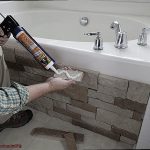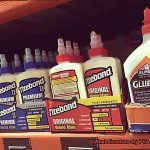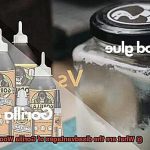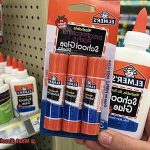Gorilla Glue. The name alone conjures up images of unbreakable bonds and limitless possibilities. It’s no wonder this adhesive has become a household staple for DIY enthusiasts, contractors, and professionals alike. But as with any product, Gorilla Glue isn’t without its weaknesses.
Let’s face it: using Gorilla Glue can be a messy affair. Its expanding foam can make it difficult to control the amount of glue applied, leading to sticky situations (literally). And once applied, removing excess glue can be a real pain in the you-know-what.
But that’s not all. Gorilla Glue also requires moisture to activate its adhesive properties, which means drying time can take longer than other adhesives. And while it may bond almost any material, porous surfaces may not provide long-lasting results.
Don’t get us wrong – we’re not saying Gorilla Glue is a bad product. Far from it. But knowing its limitations can help you make informed decisions when choosing an adhesive for your next project.
So if you’re looking for alternatives to Gorilla Glue or want to learn more about its weaknesses and how to overcome them, keep reading. We’ve got you covered.
What is Gorilla Glue?
Contents
- 1 What is Gorilla Glue?
- 2 Weakness #1: Requires Moisture to Activate Bonding Properties
- 3 Weakness #2: Expands as it Dries
- 4 Weakness #3: Sensitive to Temperature Changes
- 5 Weakness #4: Difficult to Remove Once Bonded
- 6 Tips for Choosing the Right Adhesive
- 7 Common Misconceptions About Gorilla Glue
- 8 Conclusion
When it comes to strong adhesives, Gorilla Glue is a name that stands out from the rest. This polyurethane-based adhesive boasts exceptional bonding capabilities, making it a go-to choice for a wide range of applications. Since its introduction to the market in 1994, Gorilla Glue has gained a reputation for being the ultimate bonding solution.
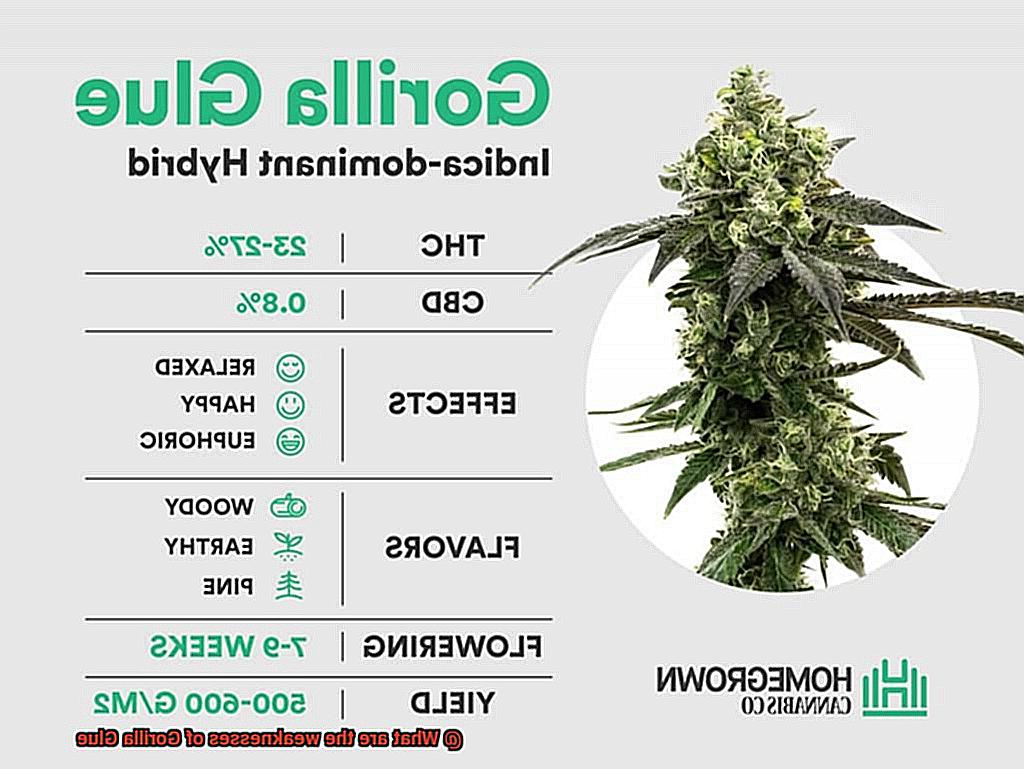
One of the main selling points of Gorilla Glue is its ability to bond to almost any surface, including wood, metal, ceramic, stone, foam, glass, and more. Its unique formula combines polyurethane, water, and two other proprietary ingredients that work together to create an unbreakable bond. Additionally, Gorilla Glue dries clear and expands slightly as it sets, filling in any gaps or cracks in the material being bonded.
While Gorilla Glue is undoubtedly a strong and versatile adhesive, it does have some drawbacks that should be considered. One of the most significant downsides is its long drying time. Unlike other types of glue that dry quickly, Gorilla Glue can take up to 24 hours to fully cure. This can be inconvenient for those who need a quick fix or don’t want to wait around for the glue to dry.
Another weakness of Gorilla Glue is its sensitivity to moisture. While moisture is necessary for activating and curing the glue properly, too much moisture can cause excessive foaming and weaken the bond. As a result, Gorilla Glue may not be the best choice for outdoor applications or in areas with high humidity levels.
Lastly, removing dried Gorilla Glue can be challenging. Its strong bond means that it can be difficult to remove from surfaces without causing damage or leaving residue behind. This can be frustrating for those who need to make changes or adjustments after using Gorilla Glue.
Despite these limitations, Gorilla Glue remains a popular choice for many applications due to its strength and versatility. To get the most out of Gorilla Glue, it’s essential to keep its weaknesses in mind. When choosing the application area and materials to use, consider its drying time and sensitivity to moisture. And if you need to make changes or adjustments after using Gorilla Glue, be prepared for a challenge in removing it from surfaces.
Weakness #1: Requires Moisture to Activate Bonding Properties
Before you start bonding, it’s important to understand one of its primary weaknesses: the need for moisture to activate its bonding properties.
To get the best results with Gorilla Glue, you must dampen the surface before applying the glue. But be careful. Applying too much water can cause the glue to foam and expand beyond what you intended, leading to a messy and uneven bond. The key is to use water sparingly and apply the glue promptly after dampening the surface.
What’s more, Gorilla Glue is not recommended for areas with high humidity or moisture levels. Excessive moisture exposure can weaken the bond over time, leading to potential failure. So always check humidity levels before using this adhesive.
Of course, Gorilla Glue is still an exceptional adhesive that can bond almost any surface. However, like any other adhesive, it has its weaknesses. Its dependence on moisture for activation of bonding properties requires proper handling and preparation. Therefore, it is essential to prepare your surface correctly and use water sparingly when using this adhesive.
Weakness #2: Expands as it Dries
Gorilla Glue has been gaining popularity in the adhesive market for its incredible strength. But like any other product, it has its own set of weaknesses. One of the most notable ones is that it expands as it dries. This property can either be advantageous or disadvantageous, depending on your project’s requirements.
When using Gorilla Glue, keep in mind that it expands up to 3-4 times its original size during the drying process. While this expansion can be useful in filling gaps and providing a strong bond, it can also be a significant drawback if not used correctly.
The expanding properties of Gorilla Glue can cause issues such as pushing out from the joint or cracking the surface if you apply too much glue or use it in an area with limited space. This can result in an unsightly finish and weaken the bond of the glue. Furthermore, excess glue that expands and dries outside of the intended area can be challenging to remove without damaging the surface.
Despite these potential drawbacks, Gorilla Glue’s expanding properties can be beneficial in specific situations. For instance, it is ideal for filling gaps in woodwork or creating a robust bond between two surfaces that may not fit perfectly. It can also be an excellent choice for outdoor projects as it can fill gaps caused by expansion and contraction due to temperature changes.
To make the most out of Gorilla Glue’s expanding property, follow the manufacturer’s instructions carefully and consider your project’s requirements before deciding which adhesive to use. Use short sentences and vivid language to draw attention to the expanding property’s advantages and disadvantages.
Weakness #3: Sensitive to Temperature Changes
If so, the culprit may be temperature changes. Gorilla Glue is a powerful adhesive that can bond almost anything together. However, it does have a significant weakness: it is sensitive to temperature changes.
When exposed to high temperatures, the glue can become brittle and lose its adhesive properties. This means that the bond may break or weaken, leading to project failure. Conversely, when exposed to cold temperatures, the glue can become too thick and difficult to apply evenly. These limitations make Gorilla Glue unsuitable for some applications and environments.
Fortunately, there are ways to overcome this weakness. First and foremost, users must use Gorilla Glue within the recommended temperature range of 50°F-90°F (10°C-32°C). This ensures that the glue maintains its adhesive strength and doesn’t break down under extreme conditions. Additionally, storing the glue in a cool and dry place away from direct sunlight or heat sources can also help maintain its effectiveness.
It’s crucial to note that Gorilla Glue’s sensitivity to temperature changes largely depends on the type of project or application. For instance, if you plan on using it to repair metal or plastic objects that are likely to experience temperature changes, think twice before using it as a long-term solution.
Weakness #4: Difficult to Remove Once Bonded
Gorilla Glue is known for its unbreakable bond, making it an ideal choice for many projects. However, this strength can also be a weakness, particularly when it comes to removing Gorilla Glue once it’s bonded with a surface. This challenge arises because of the way Gorilla Glue works and its unique properties.
Gorilla Glue expands as it dries, penetrating every nook and cranny of a surface, including pores and crevices. This expansion makes it challenging to remove without damaging the surface it’s bonded to. Additionally, Gorilla Glue is waterproof and can withstand extreme temperatures, making it even more durable and difficult to remove.
To remove Gorilla Glue, some methods may work, but they may not be safe or effective for all surfaces. One common approach is using acetone or nail polish remover. However, these methods can damage certain surfaces like plastic or painted materials. Sanding or scraping may also be effective, but this could lead to damage to the surface being worked on.
It’s crucial to avoid applying Gorilla Glue to the wrong surface by taking necessary precautions. If a mistake occurs, try to remove the glue as soon as possible before it fully dries and expands. In some cases, seeking professional help may be necessary to safely remove the glue without further damage.
Tips for Choosing the Right Adhesive
Choosing the right adhesive can make or break your project. With countless options available, it can be daunting to know which one to choose. Nevertheless, by considering these five factors, you can select the perfect adhesive for your project:
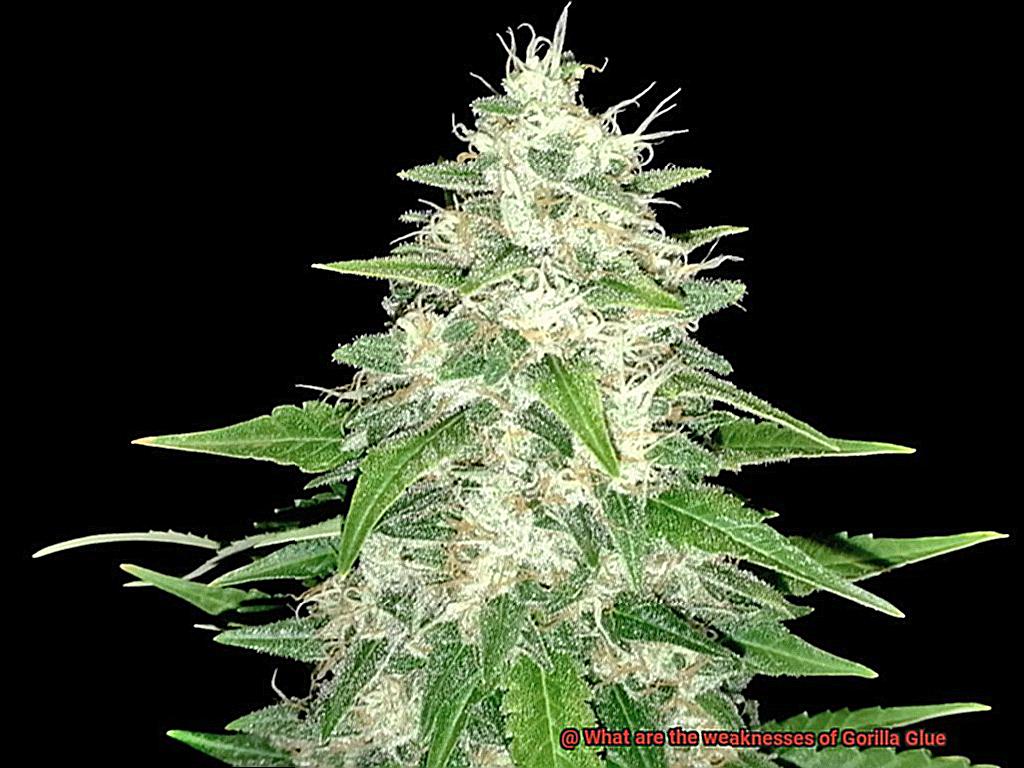
Type of Material Being Bonded
Different adhesives are designed to bond different types of materials. While some adhesives work well on wood, others are better suited for metals or plastics. It is crucial to choose an adhesive that is specifically designed for the type of material you are bonding.
Strength of Bond
The amount of stress the bond will endure is critical in determining the strength of the adhesive required. If you are bonding heavy materials or materials that will be under stress, you will need a stronger adhesive. A weak bond could result in a failed project.
Curing Time
Some adhesives require a longer curing time than others, and this can impact the efficiency of a project. If you’re working on a time-sensitive project, choose an adhesive that cures quickly. Remember to consider curing time as it affects how quickly you move on to the next step.
Environmental Conditions
Consider the conditions in which the bond will be exposed. Some adhesives may not hold up well in extreme temperatures or moist environments. Ensure that you select an adhesive that can withstand the conditions it will be exposed to; otherwise, your project may become undone.
Ease of Use
Some adhesives require special tools or techniques to apply, while others can be easily applied with a simple applicator. If you’re new to using adhesives, choose one that is easy to use and doesn’t require special skills or equipment. An adhesive that is easy to use saves time and money.
Common Misconceptions About Gorilla Glue
Gorilla Glue is a versatile and popular adhesive used by many people for various projects. However, there are several common misconceptions about this glue that people may have. To help you make the most out of this powerful adhesive, we have compiled a list of these misconceptions and the truth behind them.
Firstly, let’s address the myth that Gorilla Glue can be easily removed if a mistake is made during the application process. This is not entirely true, as Gorilla Glue is known for its strong and durable bond. Once it dries, removing it can be difficult without damaging the surface it was applied to. Therefore, it’s important to take your time during the application process and ensure everything is in place before the glue dries.
Another misconception is that Gorilla Glue can be used on all types of materials. While it’s true that Gorilla Glue can bond many materials such as wood, metal, and ceramic, it’s not recommended for use on certain plastics or rubber materials.
The chemical reaction between these materials and Gorilla Glue can cause the glue to expand and create a foamy texture, which can weaken the bond and damage the surface. Therefore, always check if your material is compatible with Gorilla Glue before applying it.
Let’s talk about another common myth- that Gorilla Glue dries clear. This isn’t always the case. Depending on the amount of glue applied and the surface it was applied to, Gorilla Glue can sometimes dry with a yellowish tint or even turn brown over time. To avoid any surprises, test a small area first before applying the glue to ensure that it will dry clear.
Lastly, some people may think that Gorilla Glue is completely waterproof and can be used for outdoor projects. While Gorilla Glue is water-resistant and can withstand some exposure to moisture, it’s not completely waterproof and should not be used in areas where it will be submerged in water or exposed to constant moisture. Therefore, it’s important to use Gorilla Glue carefully and avoid exposing it to extreme conditions.
Conclusion
In conclusion, Gorilla Glue has undoubtedly earned its reputation as a go-to adhesive for various applications. However, like any other product, it has its share of weaknesses that one should consider before using it.
One of the most significant drawbacks of Gorilla Glue is its long drying time. This is due to its reliance on moisture to activate its adhesive properties. Moreover, the glue tends to expand as it dries and can be sensitive to temperature changes. Once bonded, it can be challenging to remove.
To mitigate these issues, proper surface preparation and minimal water usage are essential when applying Gorilla Glue. Additionally, selecting an adhesive that is specifically designed for the material you are bonding and can withstand the conditions it will be exposed to is crucial.
Despite these limitations, Gorilla Glue remains a popular choice for many applications because of its strength and versatility.



